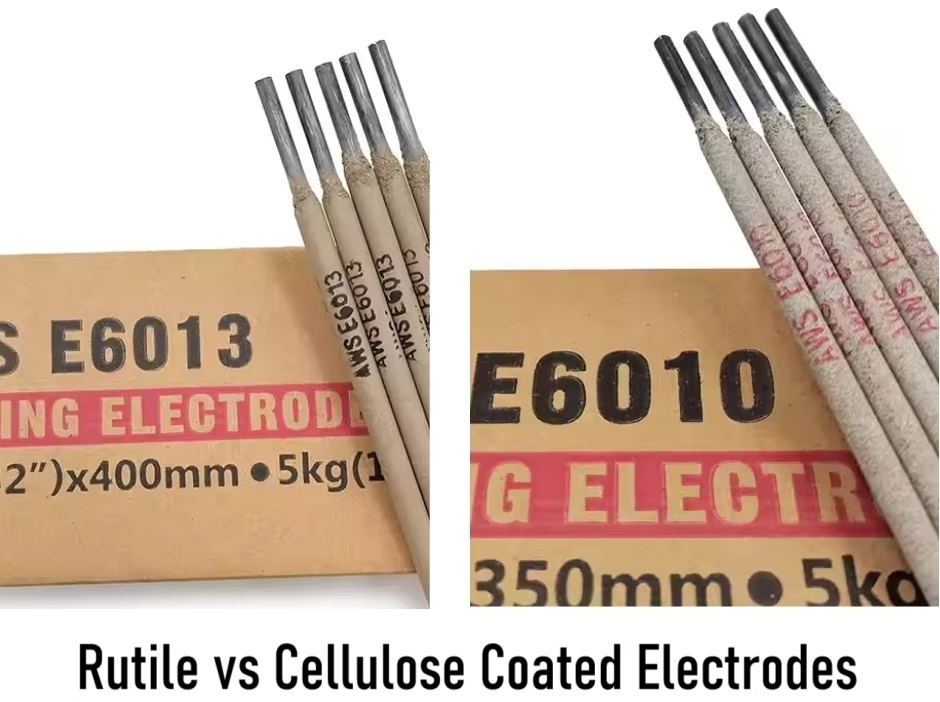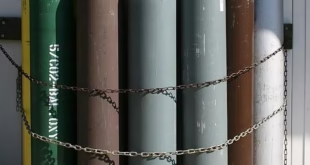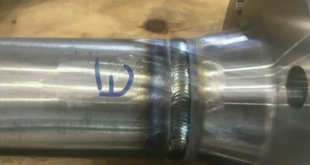Rutile vs Cellulose Coated Electrodes: When to Use Each
When it comes to welding, the type of electrode you choose can make or break your project. Among the various types available, rutile and cellulose-coated electrodes are two of the most commonly used. But what’s the difference? And when should you use one over the other?
If you’ve ever been confused about which electrode coating is right for your job, you’re not alone! This guide will break it down in a simple, easy-to-understand way so that you can make the best choice for your welding needs.
Understanding Welding Electrode Coatings
Before we dive into rutile and cellulose electrodes, let’s first understand what electrode coatings are and why they matter.

What is Electrode Coating?
Electrode coating is a flux material that surrounds the metal core of the welding electrode. This coating helps improve arc stability, protects the molten weld from contamination, and enhances the mechanical properties of the weld.
Functions of Electrode Coatings in Welding
- Shielding the arc from atmospheric contamination
- Enhancing arc stability for smoother welding
- Reducing spatter and improving bead appearance
- Influencing penetration depth and weld strength
What Are Rutile-Coated Electrodes?
Rutile-coated electrodes contain titanium dioxide (rutile) as the main ingredient in their flux coating. This makes them easier to use and provides a smooth, stable arc.
Advantages of Rutile-Coated Electrodes
- Smooth and stable arc
- Easy slag removal
- Produces an aesthetically pleasing weld bead
- Ideal for beginners due to easy handling
- Less spatter, reducing post-weld cleanup
Disadvantages of Rutile-Coated Electrodes
- Shallower penetration, making it less suitable for thick materials
- Not ideal for high-pressure applications
- Limited use in vertical and overhead welding
Common Rutile Electrodes:
- E6013 – A widely used rutile electrode for general-purpose welding (mild steel, sheet metal, automotive repairs).
- E7014 – Similar to E6013 but with added iron powder for higher deposition rates.
- E7024 – High-efficiency rutile electrode for flat and horizontal fillet welds.
- E308L-16 – Rutile-coated stainless steel electrode for welding 304 and 308 stainless steels.
- E316L-16 – Used for welding 316 stainless steel in food, pharmaceutical, and marine applications.
Common Applications of Rutile-Coated Electrodes
- Structural welding – Used in general construction work
- Sheet metal fabrication – Ideal for thin metals
- DIY and hobby welding – Great for home-based welding projects
What Are Cellulose-Coated Electrodes?
Cellulose-coated electrodes have a high cellulose content in their flux coating. They produce a strong, deep-penetrating arc, making them ideal for demanding welding applications.
Advantages of Cellulose-Coated Electrodes
- Deep penetration into the base metal
- Excellent for vertical and overhead welding
- Works well in windy and outdoor conditions
- Preferred in high-pressure applications like pipeline welding
Disadvantages of Cellulose-Coated Electrodes
- More spatter and rougher weld bead
- Difficult slag removal
- Requires skilled handling due to high penetration
Common Cellulose Electrodes:
- E6010 – A popular choice for root passes in pipeline welding, deep penetration with a strong arc.
- E6011 – Similar to E6010 but can be used with AC and DC, making it more versatile.
- E7010-A1 – Used for welding high-strength steels, common in pipeline construction.
- E7018-G – Modified cellulose electrode with low hydrogen content, used in critical welding applications.
- E7020 – Deep penetration electrode for out-of-position welding.
Common Applications of Cellulose-Coated Electrodes
- Pipeline welding – Used in oil and gas industries
- Offshore and high-pressure welding – Ideal for tough environments
- Welding in challenging positions – Perfect for vertical and overhead welding
Differences between Rutile and Cellulose-Coated Electrodes
Arc Characteristics
- Rutile electrodes: Smooth and stable arc, easier to control
- Cellulose electrodes: More forceful arc with deep penetration
Weld Bead Appearance
- Rutile electrodes: Produces smooth, clean welds with easy slag removal
- Cellulose electrodes: Rougher weld beads with more spatter
Penetration and Strength
- Rutile electrodes: Shallower penetration, suitable for thin materials
- Cellulose electrodes: Deep penetration, ideal for thick metal and pipelines
Ease of Use
- Rutile electrodes: Beginner-friendly, forgiving on technique
- Cellulose electrodes: Requires experience due to aggressive arc
When to Use Rutile-Coated Electrodes?
Use rutile electrodes when:
- You need smooth, visually appealing welds
- Working with thin or medium-thickness metals
- You’re a beginner or prefer easier handling
Industries that use rutile electrodes:
- General construction
- Metal fabrication
- Automotive repairs
When to Use Cellulose-Coated Electrodes?
Use cellulose electrodes when:
- You need deep penetration and strong welds
- Working on pipelines, shipbuilding, or offshore welding
- Welding in difficult positions (vertical, overhead)
Industries that use cellulose electrodes:
- Oil and gas pipeline welding
- Heavy-duty structural welding
- Shipbuilding and offshore construction
FAQs
Can I use rutile electrodes for pipeline welding?
No, rutile electrodes don’t provide the deep penetration required for pipelines. Cellulose electrodes are the better choice.
Which electrode type is better for beginners?
Rutile electrodes are easier to use and provide smoother welds, making them ideal for beginners.
Do cellulose electrodes require special welding techniques?
Yes, they require precise control due to their deep penetration and forceful arc.
Why is deep penetration important in certain welding applications?
Deep penetration ensures a strong, durable weld, especially for thick materials and high-stress applications.
How do I know which electrode to choose for my project?
Consider the metal thickness, required penetration, and welding position. Rutile for easy welding, cellulose for deep, strong welds.
Conclusion
Both rutile and cellulose-coated electrodes have their strengths and weaknesses. Rutile electrodes are best for smooth, easy welding, while cellulose electrodes provide deep penetration for high-strength applications. Choosing the right electrode depends on your project requirements—so pick wisely!
 Welding of Welders All about Welding and Welders
Welding of Welders All about Welding and Welders



